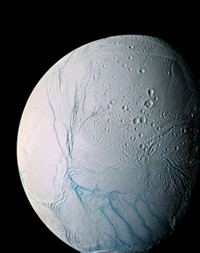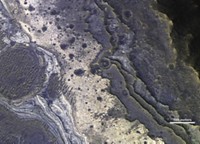Advertisement
Grab your lab coat. Let's get started
Welcome!
Welcome!
Create an account below to get 6 C&EN articles per month, receive newsletters and more - all free.
It seems this is your first time logging in online. Please enter the following information to continue.
As an ACS member you automatically get access to this site. All we need is few more details to create your reading experience.
Not you? Sign in with a different account.
Not you? Sign in with a different account.
ERROR 1
ERROR 1
ERROR 2
ERROR 2
ERROR 2
ERROR 2
ERROR 2
Password and Confirm password must match.
If you have an ACS member number, please enter it here so we can link this account to your membership. (optional)
ERROR 2
ACS values your privacy. By submitting your information, you are gaining access to C&EN and subscribing to our weekly newsletter. We use the information you provide to make your reading experience better, and we will never sell your data to third party members.
Physical Chemistry
Phoenix Water Mystery
Scientists argue over whether droplets on spacecraft's leg are liquid
by Elizabeth K. Wilson
March 19, 2009

What may be liquid water droplets clinging to a leg strut of NASA's Phoenix Mars Lander has scientists buzzing—and arguing.
Last year, Phoenix spent several months digging and analyzing soil on the martian surface, where it confirmed long-standing evidence for water ice close to the surface before succumbing to the ravages of winter. Newly released photos from the spacecraft's robotic camera show "droplets of liquid salty water" and mud that splashed during touchdown and stayed liquid for many days, says Nilton O. Renno, professor in the atmospheric, oceanic, and space sciences department at the University of Michigan, Ann Arbor.
The liquid must be water, for many reasons, including that martian atmospheric conditions make other liquids less likely.
Renno will report this hypothesis at the 40th Lunar & Planetary Science Conference in Houston on March 23. He and nearly two dozen other Phoenix mission scientists also have a paper on the droplets under review at Journal of Geophysical Research. "There is lots of evidence that the drops are...liquid," Renno says. "Two of them clearly move, and merge, and drip."
Perchlorate ions, which Phoenix discovered for the first time in martian soil, make liquid—as opposed to frozen—water, a possibility because they could lower the freezing point of water.
But not even the Phoenix team has a consensus view. Michael Hecht, a Phoenix coinvestigator at the NASA Jet Propulsion Laboratory, thinks that the spheres are merely frost.
Tufts University chemistry professor Samuel P. Kounaves, who headed Phoenix' wet chemistry laboratory, says he falls "somewhere in the middle."
Hot gases that spewed from the craft's thrusters during landing included ammonia, which could have briefly melted or reacted with soil beneath the craft to produce water droplets, Kounaves notes.
Scientists, including Kounaves, are preparing experiments that duplicate the conditions Phoenix experienced on Mars to see whether they can produce liquid water drops. "I'm not ruling anything out at this point," Kounaves says.




Join the conversation
Contact the reporter
Submit a Letter to the Editor for publication
Engage with us on Twitter